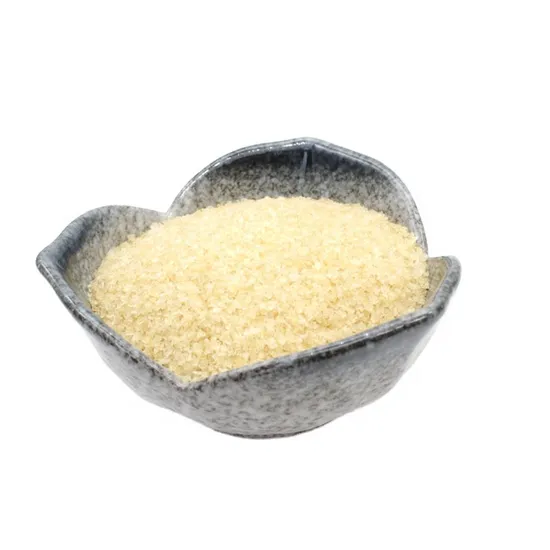Gelatin is a protein. It has many uses in different industries. People have paid attention to it for a long time. This substance comes from breaking down animal collagen. It has unique properties. These include gelling, thickening, and stabilizing. It is important in many products. Acid-Processed Gelatin (Type A) has special uses. This is because of its unique production process. It also has distinct physical and chemical traits. This article will examine Gelatin Type A. We will look at its introduction, specifications, benefits, and uses.
Product Introduction
Acid gelatin (Type A) is a gelatin type. It comes from animal collagen. This is usually pig skin. It is made using an acid process. This process takes about 24 hours. It involves preparing raw materials. These can be skin or bones. A weak acid is used, often hydrochloric or sulfuric acid. This step softens and swells the collagen. Then, gelatin is taken out with hot water.
 Understanding Gelatin Type A: Unique Characteristics
Understanding Gelatin Type A: Unique Characteristics
Gelatin Type A stands out from other gelatin types. It has distinct features. These features set it apart. This is especially true when compared to Gelatin Type B. Gelatin Type B is made differently. Its production uses an alkaline process.
Raw Material and Sourcing
Pig skin is the primary source for Gelatin Type A. This material is widely used. However, other animal products can also be utilized. These include skin and bones from various animals. Careful sourcing ensures quality.
Production Method Explained
Gelatin Type A undergoes a specific production method. It uses a weak acid. This is a key part of its manufacturing. The process involves hydrolysis. This acid-based process distinguishes it. It creates unique properties.
Key Differences: Type A Versus Type B
Understanding the differences between Gelatin Type A and Type B is crucial. These differences impact their uses. They also affect their behavior in various applications.
Isoelectric Point (pI) Properties
The isoelectric point (pI) is a critical characteristic. Gelatin Type A has a higher pI. This point is typically around 7 to 9. This high pI gives it a cationic property. This means it carries a positive charge. In contrast, Gelatin Type B has a lower pI. It is usually between 4.7 and 5.5. This lower pI makes it anionic. It carries a negative charge. This charge difference affects interactions. It impacts how gelatin behaves.
Gelling Strength and Texture
Gelatin Type B generally forms stronger gels. These gels often show less leakage. However, both Type A and Type B can create good gels. They both produce medium-strength gels. The final gel strength depends on various factors. These include concentration and temperature.
Concentration and Viscosity
Gelatin Type A is typically less concentrated. It is often thinner than Gelatin Type B. This difference in viscosity can affect handling. It also influences mixing. This makes it suitable for different applications.
Product Benefits
Gelatin Type A has specific features. These give it several benefits. They make it preferred for certain uses.
- Foam Production and Emulsion Stabilization: Type A gelatin works better. It creates and stabilizes foams and emulsions. This is due to its cationic property. It also has a higher isoelectric point. This makes it ideal for products. These products need an aerated texture. Or they need emulsion stability.
- Various Applications: Like other gelatins, Type A has wide uses. This includes the food industry. Examples are candies, jellies, dairy, creamy desserts, meat products, and beverage clarification. It’s also used in pharmaceuticals. This includes capsule and tablet coatings. It’s used in other industries too.
- Protein Properties: As a protein, gelatin is a good amino acid source. It can help improve product texture.
Conclusion
Acid gelatin (Type A) is a valuable protein product. It is made from animal collagen. This uses a specific acid process. Its unique physical and chemical properties are important. These include its high isoelectric point and cationic property. This makes it very suitable for certain uses. These include creating foam and stabilizing emulsions. It is used in many industries. This includes food and pharmaceuticals. Understanding its differences from Gelatin Type B is key. This helps in choosing the right gelatin. It is for any specific use. This helps manufacturers get the best final product properties.
It’s worth noting that MT Royal is the supplier of this product, and you can visit their website to purchase it.



 Understanding Gelatin Type A: Unique Characteristics
Understanding Gelatin Type A: Unique Characteristics


Reviews
There are no reviews yet.